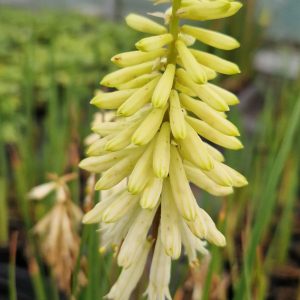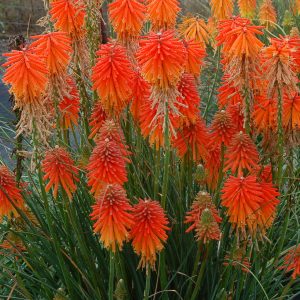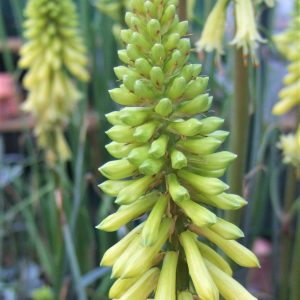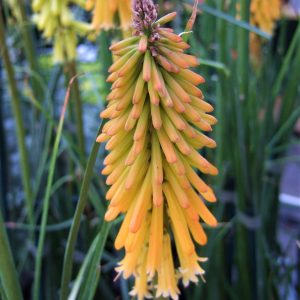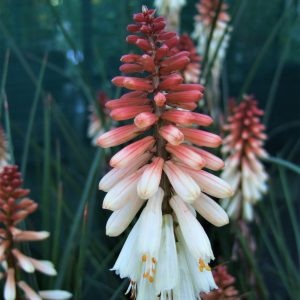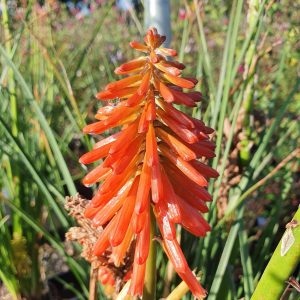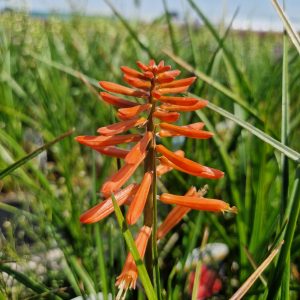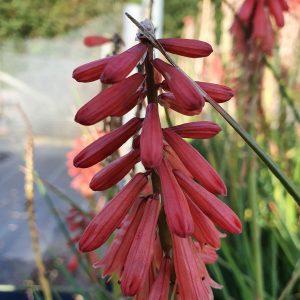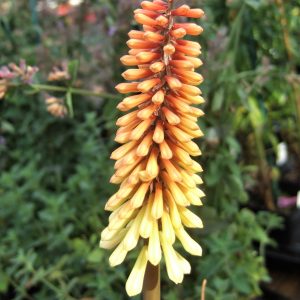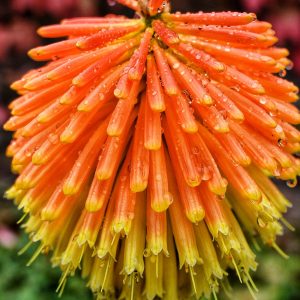Kniphofia, commonly known as Red Hot Poker or Torch Lily, is a striking perennial known for its tall spikes of tubular flowers. To ensure the successful establishment and vibrant blooms of your Kniphofia plants, follow this comprehensive planting guide:
Site Selection
Sunlight: Kniphofia thrives in full sun. Choose a location that receives at least 6-8 hours of direct sunlight per day.
Soil Quality: Plant Kniphofia in well-draining soil with a slightly acidic to neutral pH. Amending heavy clay soils with organic matter improves drainage.
Planting Time
Optimal Timing: Plant Kniphofia in early spring or autumn when the weather is cool. This allows the plants to establish strong root systems before extreme temperatures.
Planting Process
Planting Depth: Dig a hole that accommodates the size of the Kniphofia’s root ball. Plant it at the same depth it was in the container or nursery. Ensure the crown (where the roots meet the foliage) is at or slightly above the soil level.
Spacing: Space Kniphofia plants according to their mature size, generally 18-36 inches apart, depending on the variety.
Watering
Initial Watering: Water thoroughly after planting to settle the soil and ensure good root-to-soil contact.
Regular Watering: Kniphofia prefers consistent moisture. Water regularly, especially during dry spells. However, they can tolerate some drought once established.
Mulching
Mulch Application: Apply a layer of organic mulch around the base of Kniphofia plants to retain soil moisture, suppress weeds, and regulate soil temperature.
Fertilisation
Spring Feeding: Apply a balanced, slow-release fertiliser in the spring as new growth emerges. Avoid excessive nitrogen, as Kniphofia prefers leaner soil.
Pruning
Remove Faded Blooms: Deadhead spent flower spikes to encourage continuous blooming and maintain a tidy appearance.
Winter Care
Late Autumn Clean up: In late autumn, after the first frost, trim back any dead or damaged foliage. This helps tidy the garden and prevents overwintering pests.
Container Planting
Container Considerations: If planting Kniphofia in containers, use a well-draining potting mix. Ensure containers have drainage holes to prevent waterlogged soil.
Support for Taller Varieties
Staking: Taller varieties may benefit from staking to support the flower spikes, especially in windy areas.
Pests and Diseases
Aphid Control: Monitor for aphids, which can occasionally affect Kniphofia. Use insecticidal soap or neem oil as needed.
Good Air Circulation: Ensure good air circulation to prevent fungal diseases. Adequate spacing and occasional thinning can help improve air movement.
Enjoy the Blooms
Blooming Period: Kniphofia typically blooms from late spring through summer. Enjoy the vibrant, torch-like flower spikes that attract pollinators.
By following this planting guide, you’ll create an optimal environment for your Kniphofia plants to thrive. Customise care based on your local conditions and the specific varieties you’ve chosen.




